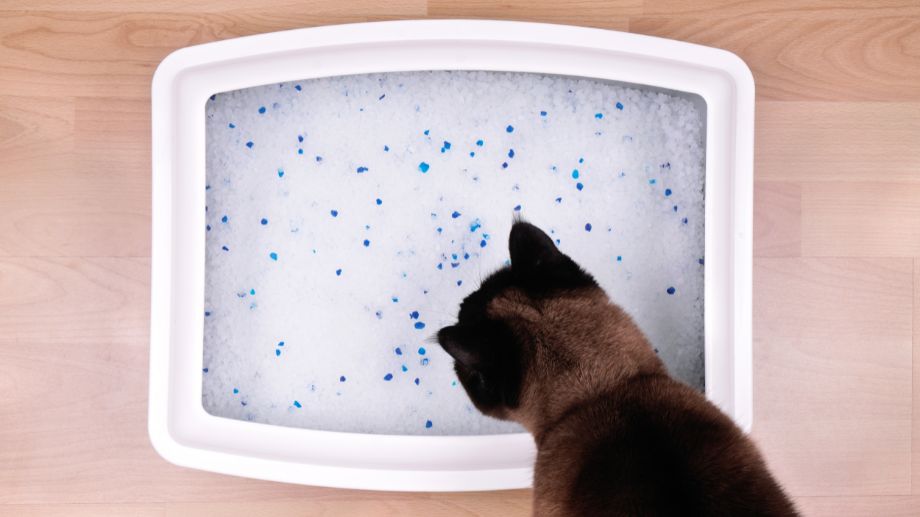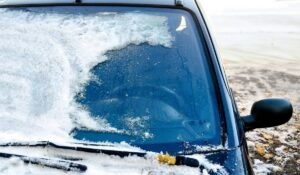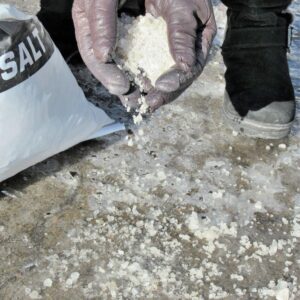If you're unprepared for the first snowfalls of the season then stores can quickly sell out of salt, other ice melts and sand.
When this happens kitty litter can be a good option for adding traction to your sidewalks or driveways, or for getting your car unstuck.
But how exactly do you use kitty litter on snow and ice?
To use kitty litter on snow or ice you want to use silica gel or dry clay kitty litter and spread it evenly over your driveway or sidewalk. Use enough to provide traction under foot but you don't need to completely cover the ice.
If you're using kitty litter to get a car unstuck you want to put a large pile of kitty litter in front of each tire forming a small mound. As the wheels spin they will get traction on the kitty litter moving your car forward, then keep driving and maintain momentum.
Kitty litter can be a great option for snow and ice if you use it properly but there are some mistakes you'll want to avoid and some tips that make kitty litter more effective.
Choose The Right Kitty Litter
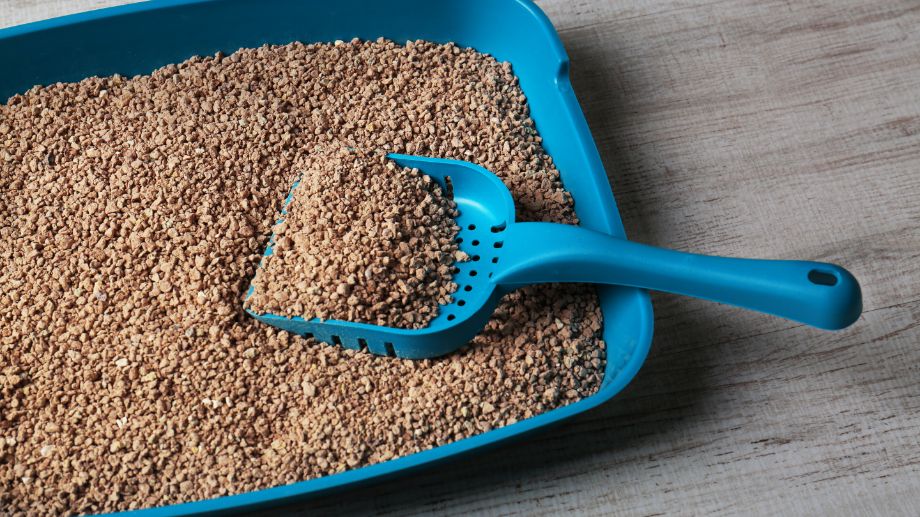
When using kitty litter to gain traction on snow or ice it's really important that you choose the correct type of kitty litter because there are a lot of different types out there and some work great while others turn to mush.
The best types of kitty litter for ice is silica gel kitty litter because it is made from exactly the same components as sand making it non-toxic and it won't get mushy when it gets wet.
Alternatively, clay kitty litter is another good option if you choose the non-clumping variety. Clumping clay kitty litter contains a substance called sodium bentonite, which causes the clay to swell up to 10 times in size and turn into a softer, wet cement like texture which will stick to your shoes and your car tires.
Natural non-clumping clay kitty litter is a better option as it has a texture that's similar to sand and it's inexpensive and easy to come by. It's a great thing to have stored in your car or house for emergencies.
Ideally you want to avoid pine, corn, and walnut kitty litters as these can absorb moisture and clump together rather quickly and don't provide as much traction. They can also produce a lot of dust, stick to everything and they can be very difficult to clean.
How To Use Kitty Littler On Slippery Sidewalks or Driveways
If you're using kitty litter on icy, slippery driveways it's important that you use it correctly so you and your cars don't slip.
First choose the correct kitty litter as we discussed above.
Silica gel kitty litter is best otherwise a non-clumping clay kitty litter will work good too.
Any other type of kitty litter will still do the job short term but it won't provide traction for as long and will likely cause a lot more mess than the silica gel or non-clumping clay.
Sprinkle a small amount of kitty little over the icy sidewalk, driveway or road.
The kitty litter will sit on top of the ice and add traction allowing you and others to walk on it without slipping and allow cars to drive on the ice without sliding. It's important to note that kitty liter does NOT melt ice, it just provides traction.
Spread the kitty litter evenly over the surfaces you plan to walk or drive on.
You don't need to fully cover the entire sidewalk or driveway with kitty litter, you just need to put enough down that it provides traction.
You'll want to reapply kitty litter to the top of your icy surface regularly to maintain traction.
Kitty litter won't last for an extremely long time. Winds can blow it away or fresh snowfall can cover it rendering it useless.
When this happens simply reapply the kitty litter as discussed above.
It's a lot like spreading sand over an area. You want to have good enough coverage that people and vehicles have constant traction, but you don't need to overdo it as that's a waste of money.
Tips For Applying Kitty Litter Onto Icy Surfaces
One of the downsides of using silica gel kitty litter on your icy sidewalks and driveways is that the grains are a lot larger than sand and this means they have a tendency to bounce around.
When you're spreading the kitty litter you ideally want to be as close to the surface as possible to ensure that the kitty litter grains don't bounce away from the area you are trying to cover.
It can also be a good idea to step on the kitty litter as you apply it to push it into the ice and stop it from blowing or rolling away in the wind.
How To Use Kitty Litter To Get Your Car Unstuck On Ice
Having a bag of kitty litter in your car can be great for emergency situations and getting your car unstuck when it's on slippery ice.
If you've found yourself stuck on the ice and unable to move here is how to use the kitty litter to get your car unstuck.
Ideally for your car you'll want to use a non-clumping clay kitty litter as it has a similar texture to sand, but silica gel kitty litter can work as well.
First you want to make sure you clear the path around your tires as much as you can so you are applying the kitty litter directly onto the road or ice. Placing the kitty litter on top of thick fresh layers of snow can cause it to disperse away from your tires and not give you the traction you need.
Next, generously pour kitty litter in front of all your tires forming a mound. Make sure the kitty litter gets as close the the tires as possible.
Focus here on the driving tires. So if you have a front wheel drive then focusing on the front wheels and if you have a back wheel drive when focus on the back wheels as this is where you'll need the most traction.
It's also a good idea to put a mound of kitty litter behind your tires too and you may need to move your vehicle back and forth before getting enough momentum to drive away.
Slowly accelerate and apply pressure to the gas pedal to get your car moving again.
The wheels should grip onto the kitty litter allowing your car to move forward.
Sometimes moving the car back and forth a few times can help you build up momentum and get the car moving forward again so be patient and take your time.
Remember, do not try to move too much too fast. Heating the tires will cause the snow to melt or will fling all the kitty litter away from your tires, which could make you more stuck. Nice and easy is the best method here.
Once your car is moving keep going! Don't stop or you might get stuck again.
Clay kitty litter and silica gel kitty litter is natural and non-toxic so it won't damage the environment and can be left behind.
Adding Weight to Your Car Can Prevent Getting Stuck
When driving in winter on slippery roads the more weigh in your car the more pressure is applied to your tires and the more likely you are to maintain grip.
Big bags of kitty litter are heavy, making it a great option to keep in your trunk for weight.
The added weight to your backend can help offer some extra traction to prevent you from getting stuck in the snow in the first place.
Alternative Options To Kitty Litter For Snow and Ice
Kitty litter is undoubtedly not the only option available, nor is it the best option. However, when in a pinch, it will help you get the job done.
- Sand is great for adding traction to sidewalks and under tires. It is easy to clean up but may be challenging to obtain and can be pricey.
- Boards, sticks, and rocks are all items that can add traction to tires when stuck in the snow, but in harsh weather conditions, they may also be slippery.
- Anything heavy in your trunk can add additional weight to your car's back end.
How To Use Kitty Little To Prevent Foggy Morning Windows
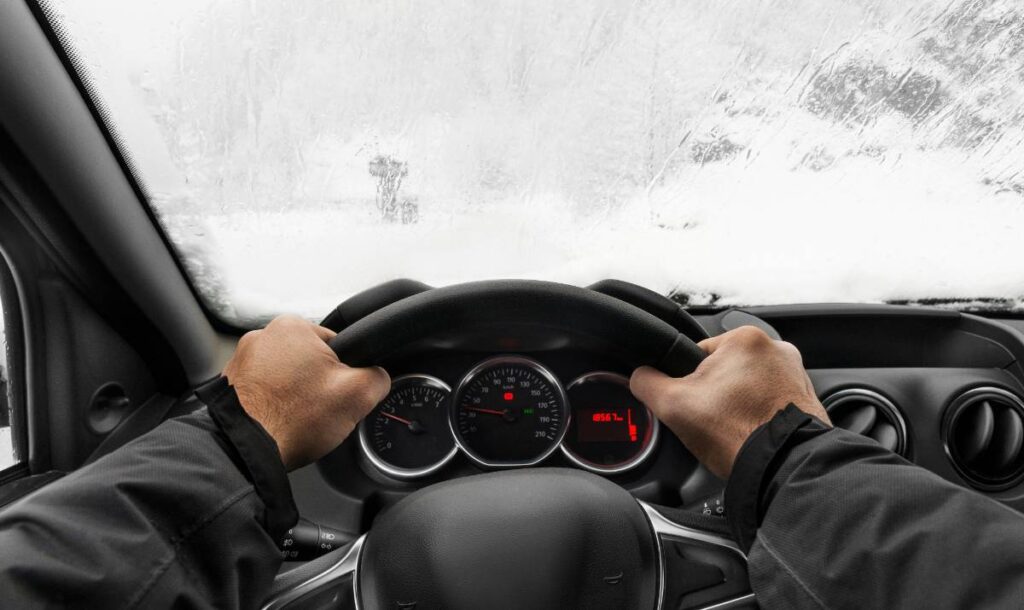
Did you know that kitty litter can be used to prevent the windows in your car from fogging on cold winter days?
This is because kitty litter is made from materials designed to adsorb/absorb moisture. This works for cat piss yes, but it also works for the moisture in the air in your car. Just like those little “do not eat” silica gel packets in your food.
The windscreen of your car becomes foggy because the moist air from the inside of your car condenses on the cold windscreen and turns to liquid water – creating a fog and making it difficult to see out of your windscreen.
Kitty litter can adsorb moisture from the air leading to less (or no) fog.
To use kitty litter as a fog detterant for your windshield simply follow these steps:
- Choose silica gel kitty litter as it's the best at adsorbing moisture and can be used over and over again without clumping together (avoid clay, pine, corn and walnut kitty litter)
- Fill up a few old socks or cloth bags with kitty litter. The more you use the more moisture it'll remove from the air.
- Place the filled socks or bags in your car – ideally near the windows or on the dashboard for maximum effect
- Leave in your car overnight but also whilst driving. They'll continue to work
If you notice they have stopped working don't throw them away. You can refresh silica gel packets by placing them in the oven on a low heat for 1-2 hours. This will cause the water they have adsorbed to evaporate away and they will be good as new.
Just make sure the socks or cloth you used doesn't melt in the over.
It might be a good idea to create silica gel packs you can reopen so you can empty them and refill them with dry silica gel.
This method isn't perfect and using your cars heat to heat the windshield will be the best at stopping moisture. But kitty litter socks can minimize the moisture on the windows in the morning meaning you'll be ready to go faster than you otherwise would.
Important Things to Remember
- When used to gain traction, it is imperative to use a non-clumping style to prevent a slippery mess as ice and snow melt.
- 100% no-filler clay is a must to prevent unwanted chemicals from leaching into soils.
- Ensure to clean up litter soon after use to avoid lasting clay-mud staining of pavement.
- Kitty litter does not melt ice. It can be used to help gain traction on ice but will not remove it.

